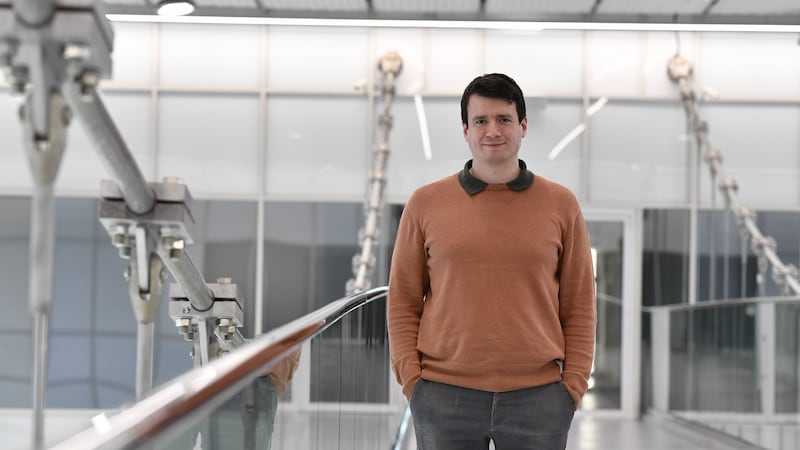John Le Jeune has lived in Moscow for the past six years, first working for Bord Bia, the Irish food board, and now for the Skolkovo Foundation. Skolkovo, as the area he now works is also called, is known in Russia as a tech hub for local and international start-ups working in innovative technology, R&D in frontier technologies and education. Le Jeune is from Stoneybatter in Dublin, where he grew up after returning from Italy in 1996. He recently saw The Cripple of Inishmaan as part of Moscow's Irish Week and having enjoyed the way Irish humour went down in Russian, he decided to share his own experience of the country
It is difficult for an outsider to imagine what Moscow is actually like, not to mention Russia in general, which again is quite different from the capital. I have been here six years and while there are eccentricities, these usually do not extend to bears walking the streets, although there may be exceptions in Siberia. People often joke that when you drive out of Moscow, you’ll see a sign saying “Welcome to Russia” and the differences can indeed be stark, but there is no greater rivalry than that of Moscow and St Petersburg.
Russia’s two capitals - St Petersburg and Moscow - are quite distinct from one another. I say “two capitals” as the former is the cultural capital, whereas the latter is the political and economic centre.
During my first trip to Russia in 2009, I went to St Petersburg and over the years I returned to the city a total of five times. I like St Petersburg, but not necessarily for the reasons one might expect. The city, formerly known as Leningrad, is essentially a museum of behemothic proportions, with all its museums, palaces, cathedrals and of course the Hermitage, which is home to artistic works by the likes of Da Vinci, Rembrandt, Van Gogh and Monet.
I prefer the people of St Petersburg to those in Moscow. The best way to describe them is that they seem to care less about appearances and are just generally more laid back and bohemian. Moscow possesses all the signs of wealth and political power, while St Petersburg is more rundown and grittier with dive bars and other cool places to visit. That isn’t to say that Moscow doesn’t have cool places, it has many, but they are usually opulent and sleek.

When I visited St Petersburg in 2009, I spent a month in the region. Two weeks in the city itself, a week at an eco-village in the middle of nowhere, bordering the Karelia region, then a final week back in the city. The hostel I stayed at had just opened for business in a side street off Nevsky Prospekt, the city’s main avenue. I got friendly with a couple of the staff there who had organised an international group to see the sights and invited me to join them. This was unexpected, but very kind, so I ended up going to a show at the Mariinsky Theatre, followed by a party at a dilapidated ground floor flat for dinner and drinks. The flat itself was in a Tsarist-era building and was reminiscent of something from a Dostoevsky novel - floorboards were missing, the red bricks in the walls were pockmarked with holes - but it was still cosy.
She was not how I imagined a stereotypical administrator would be. She had piercings in her face, her light blonde hair held hints of green She was wearing torn black jeans, a tank top, and had several tattoos on her arms.
On the day I arrived, one of the women at the hostel front desk, Olga, told me that I should register my passport and visa at a migration office nearby. This was a daunting prospect for me because I could just about read the alphabet, but could only say a few basic phrases such as “good morning”, “good day” and so on.
The migration office was in a courtyard and the door, but for the small sign next to it which hung on the weathered wall, was almost inconspicuous as an entrance to a residential building. I walked into a room that was old and dusty with faded pictures hanging on the walls and shelves full of folders. A woman sitting behind a wooden desk glanced up with a bored expression. She was not how I imagined a stereotypical administrator would be - and this is a paradigm of how St Petersburg can be worlds apart from Moscow. She had piercings in her face, her light blonde hair held hints of green She was wearing torn black jeans, a tank top, and had several tattoos on her arms.
“Do svidanya!” I said.
At this, the girl stared for several seconds before bursting into guffaws.
I stood, confused, before slapping my palm on my forehead. Instead of saying “hello” I had said “goodbye”. I took out my phrasebook and leafed through it amid the gales of laughter and found the correct word.
“Zdravstvuytye!” I said, and grinned hopefully as she wiped tears from her eyes and reached out a hand for my passport.
“Ireland?” she said, hiccupping as she read my visa.
“Yes,” I said.
She filled out a piece of paper and then passed it across the desk for me to sign.
“Come back in three days,” she said.
Three days passed and I walked into the office again.
“Ah, do svidanya!” the girl said, jokingly and smiling.
“Do svidanya!” I said, smiling back.
She handed me my passport and registration papers.
If you live overseas and would like to share your experience with Irish Times Abroad, email abroad@irishtimes.com with a little information about you and what you do










